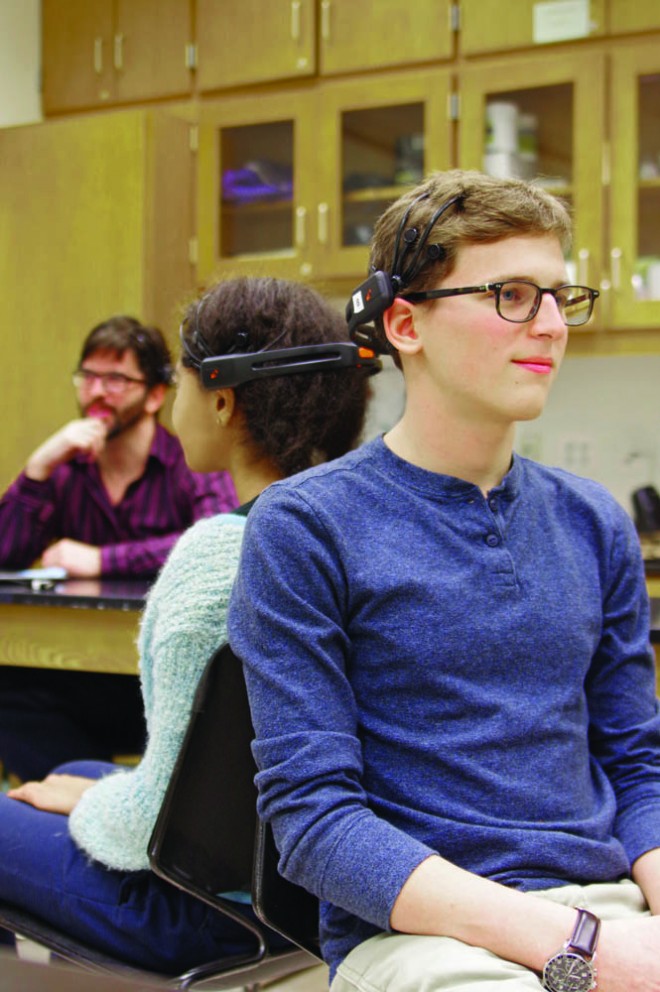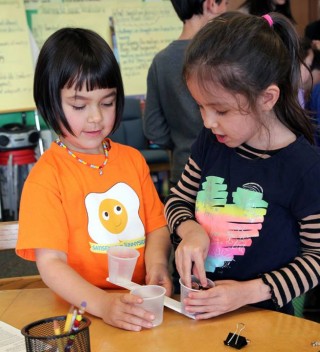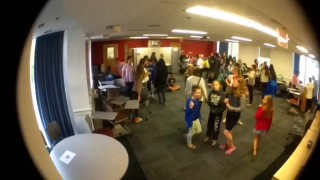Last fall, Trevor students collaborated with a group of NYU neuroscientists, performing groundbreaking experiments that explored brain activity during learning. The study, entitled “Crowdsourcing neuroscience: Neural oscillations and human social dynamics,” tried to determine what happens when a group of brains synchronize with one another–and to understand the consequences of this synchrony in terms of learning and memory. In a field that had primarily focused on brain activity in individuals, this study represented a real jump forward.
Jamie McClintock, upper school science teacher and department chair, believed the science classroom would be the perfect place to learn about learning itself.
Funded by the INSPIRE project, the team included David Poeppel, a renowned cognitive neuroscientist and Trevor parent. His graduate students first offered a series of lessons about brain science to Mr. McClintock’s Advanced Biology class.
Students then helped to design the experimental conditions to study their brain activity while learning. As McClintock taught the biology class, the students’ brains were monitored. They wore Emotiv EEG headsets, a wireless device that detects the activity of large groups of neurons in different regions of the brain, recording 128 data points every second. Neural synchrony is thought to underlie a diverse set of behaviors and experiences, but its role in social interaction is poorly understood. This experiment could shed light on the role of synchrony in the social brain.
Trevor students experienced firsthand what it means to perform a genuine scientific study.
Its data is still being analyzed. For the full story and more information, follow this link: https://trevordayschool.uberflip.com/i/508716-trevor-magazine-winter-2014-2015/18



